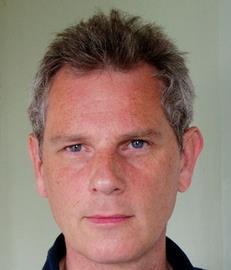The man who helped create the controversial Merton Rule is now using his diplomacy skills in the private sector
What started life as a throwaway idea in a local authority draft planning paper has grown into a byword for energy conservation. The Merton Rule, which requires new developments to use 10% renewable energy, was incorporated into the London borough’s planning regulations in 2003. Since then it “has taken on a life of its own”, says Adrian Hewitt (pictured), who as the London borough’s principal environment officer was involved in creating the rule.
He left recently to become an associate partner at new consultancy Metropolis Green, where he will help developers, local authorities and technology firms to produce new technologies and achieve the renewables obligation. He sees his role as a facilitator, something that comes naturally after his time at Merton, where he liaised between councillors and administrators.
“I learned a lot about gently persuading people, especially higher-ups, to do things or change their views. I also learned not to be afraid of the great and the good,” he says. Eventually he felt he had done as much as possible at the council to further the renewables obligation, and so left to tackle the bigger picture. “The next step for Merton was to develop some kind of infrastructure, such as combined heat and power and biomass. But councils are naturally risk-averse and a proposed scheme was put on hold,” Hewitt says.
He cites Woking Borough Council’s Thameswey Energy as a good example of what can be achieved. The CHP supplier, set up in 1999, is 90% council-owned and 10% owned by Xergi, a Danish biogas and CHP company. It provides energy and hot water for bars, car parks, galleries and museums as well as council offices.
The pressure for councils to implement a long-term renewables technology strategy is growing, says Hewitt, pointing to the Greater London Authority’s recently adopted alterations to the London Plan. These state that councils should “adopt a presumption that developments will achieve a reduction in CO2 emissions of 20% from on-site renewable energy generation, which can include sources of decentralised renewable energy”.
Hewitt, who is on the GLA renewables group, admits: “There’s a big question mark over how are we going to meet this 20% target. It will require investment in some kind of new technology infrastructure and the only way to get this is through development of pyrolysis and anaerobic digestion systems.”
Pyrolysis involves breaking down mostly inorganic matter by heating it in electric ovens in the total absence of oxygen. The end products are carbon black, oil which can be sent back to a refiner, and hydrocarbon gas, usually methane, which can be used to make steam or electricity. “Pyrolysis doesn’t burn; it thermally treats or bakes the material without any combustion,” Hewitt says. Anaerobic digestion systems break down biodegradable material using micro-organisms. The process is widely used to treat wastewater sludge and organic waste.
Hewitt is involved in negotiations which he hopes will see Merton council install a pyrolysis plant – “about half the size of a living room” – in Mitcham by autumn. It will process plastic, metal and wood waste from demolition sites and the heat and gas created should produce hot water and some electricity for a 200-house development.
People who can help to get all the players together will be increasingly important, Hewitt says, as more and more councils follow the lead of the Merton Rule.
Source
����Ӱ�� Sustainable Design


















No comments yet